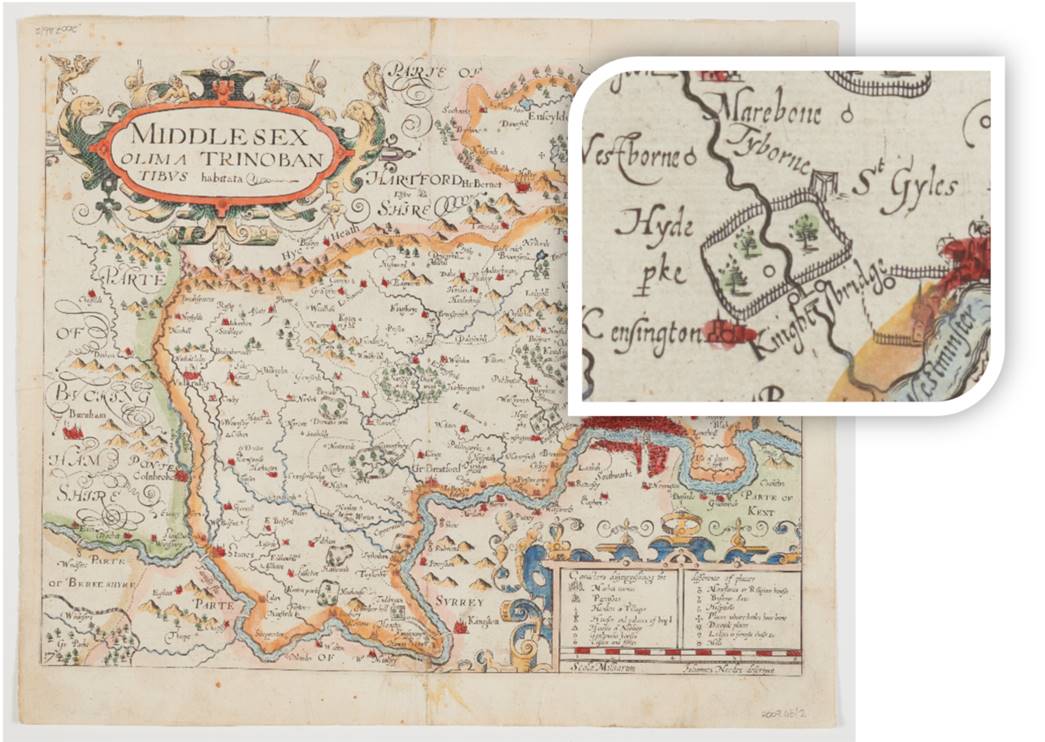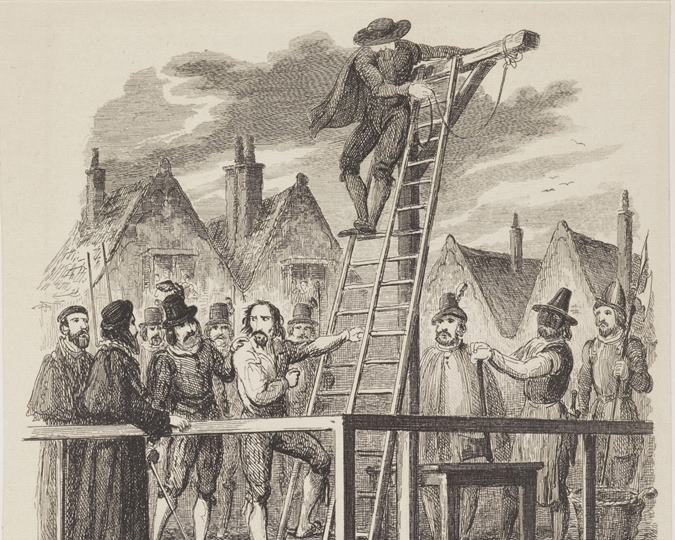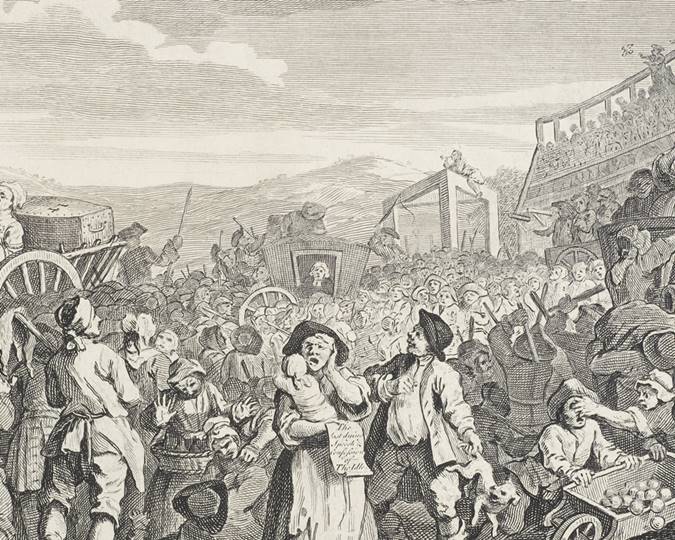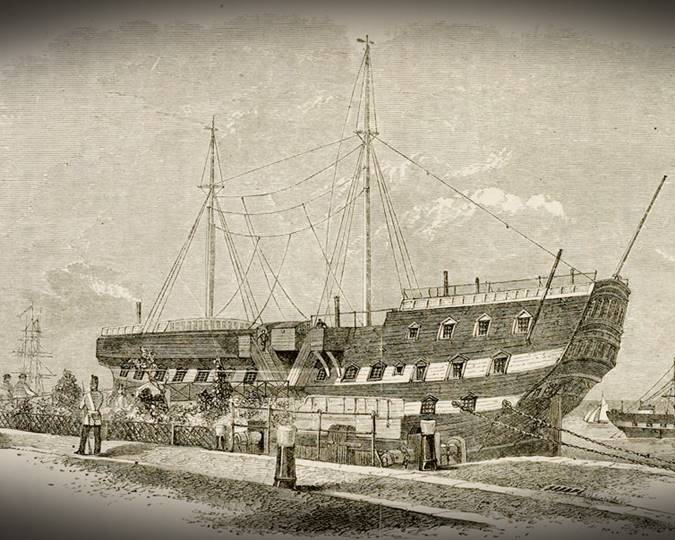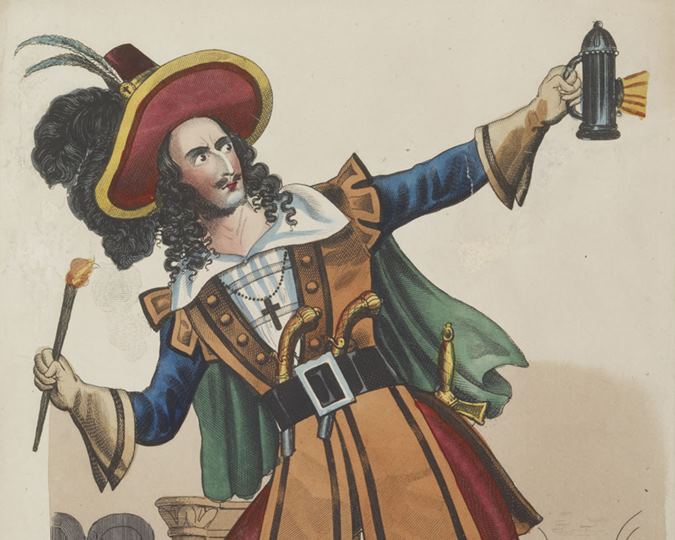London’s landscape was once peppered with prisons, stocks, gibbets, and gallows. Explore London’s execution landscape through these interactive maps, and discover how capital punishment was an inescapable reality for Londoners between 1196 and 1868.
Public execution was the dominant form of punishment for serious crimes in England up until the mid-19th century. Perhaps more importantly, the terrifying sight of the often slow, painful and degrading death of those who had broken the law served as a warning to other citizens. The authorities relied on the spectacle of public execution to demonstrate the authority of the Crown, Church and State over the life and death of its subjects.
Until 1868 — when executions became private affairs hidden behind prison walls — the process and consequences of death penalty were highly visible in London. Up until 1783, when condemned prisoners at Newgate were hanged outside the debtors’ door of the prison (on display in the Executions exhibition), execution days usually began with a procession of condemned prisoners through the streets. The great ‘Tyburn Fair’ – as execution days were known – was held up to eight times a year on the outskirts of Westminster (close to where Marble Arch now stands), while those living south of the river could see executions at the Surrey gallows on Kennington Common.
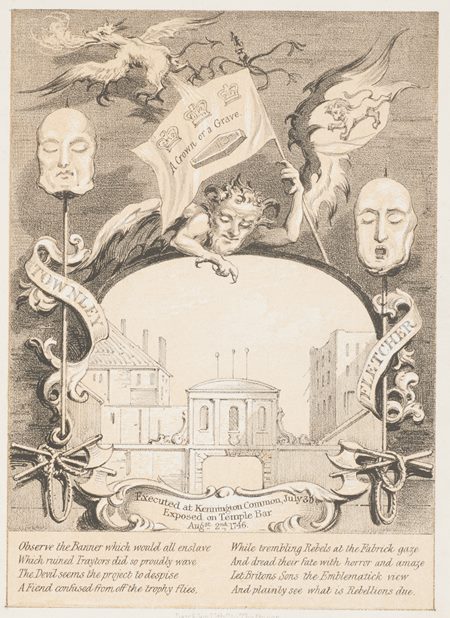
Lithograph (c.1830-5) made after a 1746 etching showing the heads of Townley and Fletcher on spikes. (ID no.: 80.501/1024)
At various points in London’s history, heretics were burned at Smithfield, traitors beheaded on Tower Hill and pirates hanged at Execution Dock near Wapping. Special gallows were erected at public spaces where rebels and traitors could be drawn, hung and quartered, while murderers and other infamous criminals were often executed on temporary scaffolds near the sites of their crime. Then their corpses might be hung in gibbet cages on heaths or along the banks of the Thames, while heads of traitors were impaled on spikes to stand for months, years or decades as warnings on city gates. The heads, limbs, hands and other body parts of ‘quartered’ rebels and traitors were sometimes sent to different parts of the city to be nailed up. State public punishment was inescapable for Londoners. Even if they shunned the execution day pageant and the great show itself, they could hardly miss the grisly reminders of death penalty that confronted them across the city and around the outskirts of town.
As part of the research for the Executions exhibition at Museum of London Docklands (14 October 2022 – 16 April 2023), we searched hundreds of records to identify the many sites associated with the long history of public execution in London. We found over 100 execution sites in Greater London, and over 50 places where bodies or body parts were exhibited. Explore three interactive maps to find these locations and learn more about the spectacle of public punishment in London.
Customary sites
Tyburn, Smithfield, Newgate, Execution Dock, Tower Hill, Kennington Common and other locations were all used regularly over decades or centuries for public executions. Public spaces such as Cheapside, Westminster Palace Yard, St Paul’s churchyard and Charing Cross were also used occasionally for particularly high-profile crimes. Scroll around this map and zoom in to find these sites. Click on the icons on the map to learn more about them.
Sites of crime
In addition to the customary places of execution, some criminals — particularly murderers — were sentenced to be hanged in sight of the place where they committed their crime. These local spectacles were intended to demonstrate to the victims’ families and neighbours that justice had been served, and to warn associates of the criminals not to follow in their footsteps. In the 16th century, heretics were often executed locally. Rioters and rebels were also often executed at a site associated with their crimes. In the aftermath of the ‘Gordon Riots’ of 1780, 26 anti-Catholic rioters were executed across 13 sites in London. These were once-in-a-lifetime events for most neighbourhoods, though some streets hosted the gallows on numerous occasions. Click on the icons on the map to learn more about them.
The executed body in the landscape
Even when executions were not taking place, Londoners would still have been confronted with many reminders of public punishment. Newgate Prison and Horsemonger Lane Gaol both housed condemned prisoners awaiting their execution (though many were reprieved). These hulking stone buildings displayed decorative chains and leg-irons above their entrances to remind passersby how criminals were treated. The public could encounter the dead bodies of criminals hanging in cages, traitors’ heads on spikes over London Bridge and Temple Bar, and body parts affixed to the city gates. Gibbets were placed by the main roads into the city and along the River Thames so no one entering the capital could escape witnessing the fatal consequences of crime. Click on the icons on the map to learn more about them.
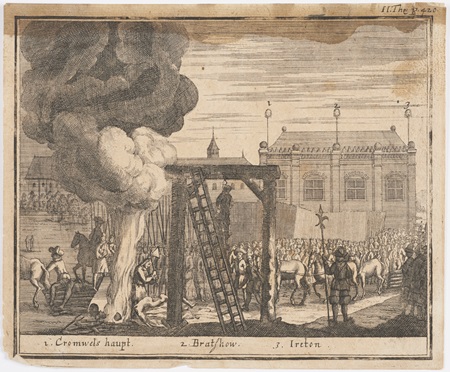
The bodies of Cromwell, Bradshaw and Ireton — who had signed the death warrant of Charles I — were exhumed, executed and decapitated. Unknown artist, 1700-50. (ID no.: 46.78/843)
Today, it is easy to forget just how visible public execution and the wider infrastructure of punishment were to Londoners before 1868. But for centuries, the infamous Tyburn Triple Tree and other gallows and gibbets cast their shadows over the city, making the threat of a painful public death ever present in the minds of Londoners’.
While we may never be able to imagine just how oppressive that must have felt, we can, by mapping London’s execution landscape, begin to grasp how the spectacle of state violence worked its way into the consciousness of Londoners. The modern city has few reminders of our brutal past. But, as these maps demonstrate, within central London you are never further than 5 kilometres from a known site of execution. In the City of London’s Square Mile, you are always within 500 metres of a place where the gallows once stood!
Executions closed at the Museum of London Docklands on 16 April 2023.
Explore the Executions online audio tour, which tells the fascinating stories behind some of the objects in our 2022-23 exhibition. The tour is a story of the executed, the Londoners who witnessed their deaths and the impact of public executions on the capital’s landscape, economy and society.








